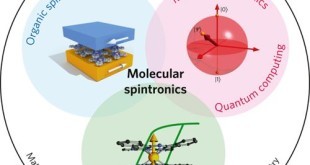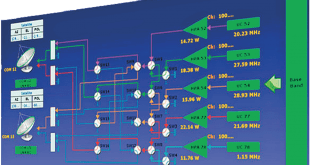“Oceans cover more than 70 percent of the earth’s surface, but we know very little about them,” said Ersin Uzun, vice president and general manager of the Internet of Things team at Xerox. Floating sensors, known as floats, can gather far more detailed information, and can remain at sea …
Read More »DARPA call for innovative mission system concepts and Breakthrough Technologies for peer adversaries
The Defense Advanced Research Projects Agency’s (DARPA) Strategic Technology Office (STO) DARPA has released a broad agency announcement (BAA) in Nov 2021 on a funding opportunity for research and development of mission system concepts to help the U.S. military address the challenges of peer competition. For decades, the United …
Read More »Molecular spintronics is emerging field of nanoscale electronics that uses molecules to build ultrafast, low power electronics devices
The age of electrically-based devices has been with us for more than six decades. With more and more electrical devices being packed into smaller and smaller spaces, the limits of physical space will prevent further expansion in the direction the microelectronics industry is currently going. Also, volatile memory, which does …
Read More »Co-operative Perception (CP) for Intelligent Transportation Systems (ITS)
Autonomous vehicles (AVs) have received extensive attention in recent years as a rapidly emerging and disruptive technology to improve safety and efficiency of current road transportation systems. Most of the existing and under development AVs rely on local sensors, such as cameras and lidars, to perceive the environment and interact …
Read More »Urban Warfare and urban terrorism are the greatest future security threat, require new tactics and technologies being developed and tested
Cities have become the new battleground and Hybrid or Urban Warfare the greatest threat being waged by ISIS to Boko Haram to Hamas to Ukraine rebels. Boko Haram is carrying out its urban terror campaign against the Nigerian Army and its allies. In the Paris attacks, two teams of lightly armed …
Read More »Software modem
Conventional modem designs can be termed as ‘fixed-function’ modems ‘ because almost all modem functionality in these modems are implemented in silicon resulting in large die sizes and limited flexibility. As the number and complexity of air interfaces increase, so does the challenge involved in planning, designing, manufacturing, testing and …
Read More »Metamaterial based Antennas for wireless and space communications, GPS, satellites, airplanes and missile seekers
Wireless electronic systems have been relying on dish antennas to send and receive signals. These systems have been widely used where directivity is important and many of those systems work well at a relatively low cost after years of optimization. These dish antennas having a mechanical arm to rotate the …
Read More »DARPA EXTREME devloped engineered optical materials or metamaterials now transitioning from NGA to AFRL UAS and Unmanned combat aerial vehicles (UCAV)
Optics & Electro-Optics areas through areas like Day vision, Night Vision, Thermal Imaging are playing vital role in warfare due to their high resolution and covert passive operation. The Infrared Search and Track system uses the heat or infrared radiation emitted by the target to provide passive means of detecting …
Read More »Satellite Network Management systems (NMS) are evolving to meet commercial and military requirements
Satellite communications represent a cost effective and reliable means of transporting voice, video and data to and from remote locations. The satellite industry is one of those industries where network management plays a key role. Therefore, the requirements for network management solutions for the satellite market are usually very stringent. For …
Read More »FAST , TIA 5041 OSDI for all digital SATCOM terminal for Miltary
Historically, the evolution of the modem technology has been exclusively focused on purpose-built solutions with a Printed Circuit Board (PCB), CPU, FPGAs, discrete components, and/or an Application Specific Integrated Circuit (ASIC); and combined with implementation code targeted for the custom hardware environment to deliver a limited set of capabilities and …
Read More » International Defense Security & Technology Your trusted Source for News, Research and Analysis
International Defense Security & Technology Your trusted Source for News, Research and Analysis





